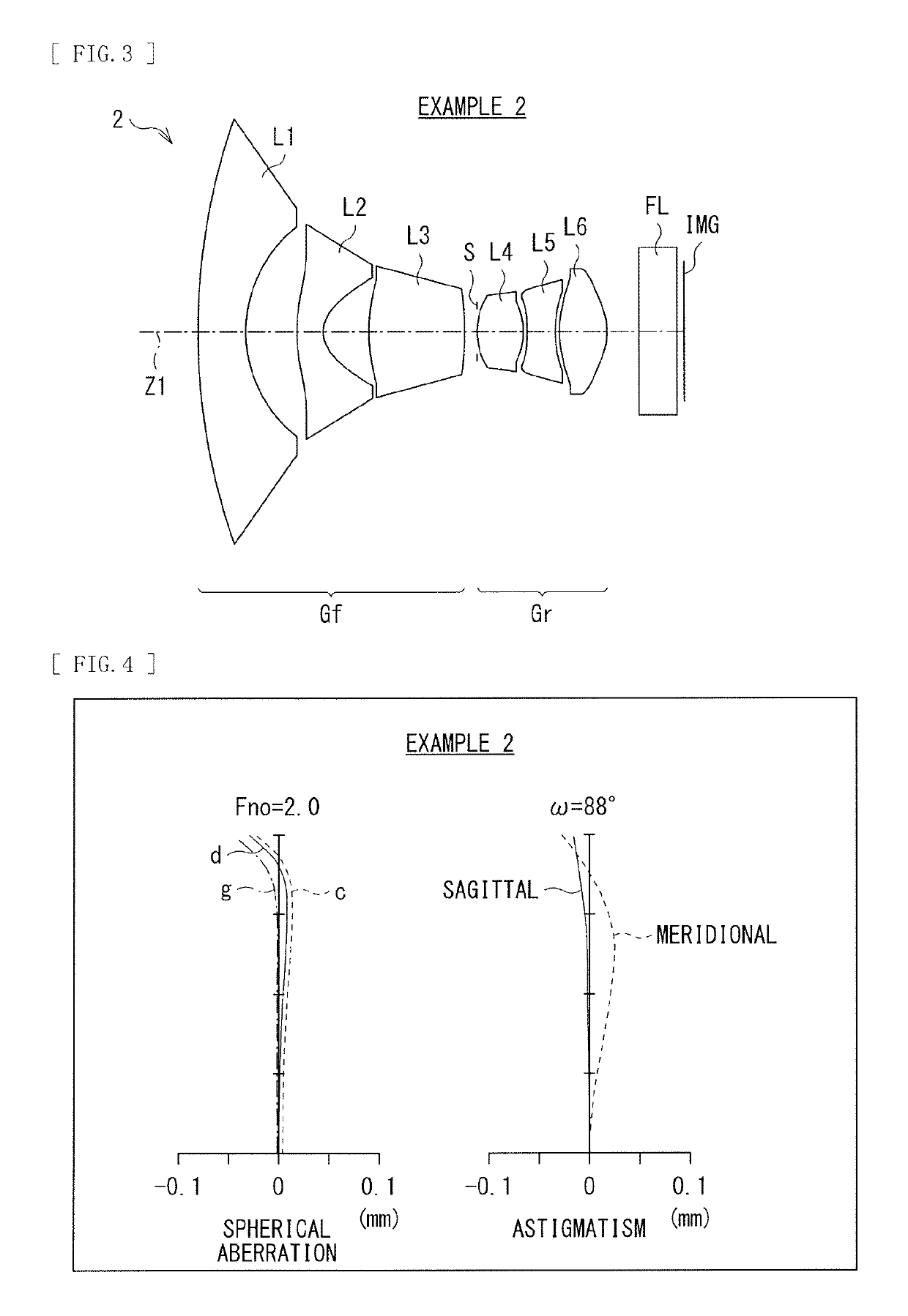Imaging lens and imaging unit
a technology of imaging unit and lens, which is applied in the field of imaging lens and imaging unit, can solve the problems of difficult to obtain satisfactory resolution performance over the surroundings, difficult to reduce costs, and the failure of imaging lens in fully correcting chromatic aberration, so as to improve the efficiency of imaging and reduce the cost of restraining costs , the effect of optimizing the configuration of each lens
- Summary
- Abstract
- Description
- Claims
- Application Information
AI Technical Summary
Benefits of technology
Problems solved by technology
Method used
Image
Examples
application example
[3. Application Example to Imaging Unit]
[0070]The imaging lens according to this embodiment is applicable to, for example, an imaging unit such as an on-vehicle camera, a monitoring camera, and a camera for a mobile device. In the case of the application to the imaging unit, as illustrated in FIG. 1, the imaging element 101 such as CCD (Charge Coupled Devices) and CMOS (Complementary Metal Oxide Semiconductor) is disposed in the vicinity of the image plane IMG of the imaging lens. The imaging element 101 outputs an imaging signal (an image signal) that corresponds to an optical image formed by the imaging lens. In this case, as illustrated in the figures such as FIG. 1, for example, a filter such as an infrared ray cutoff filter and a low pass filter may be disposed between the sixth lens L6 to and the image plane IMG. In addition, optical members such as sealing glass for protection of the imaging element may be disposed.
[0071]FIGS. 11 and 12 provide a configuration example of on-v...
numerical example 1
[0087][Table 1] summarizes lens data of Numerical Example 1 in which specific numerical values are applied to the imaging lens 1 illustrated in FIG. 1. In the imaging lens 1, both sides of each of the second lens L2 to the sixth lens L6 are the aspherical surfaces. [Table 2] summarizes values of the aspherical surface coefficients A4, A6, A8, A10, A12, A14, and A16 in the aspherical surfaces, together with values of the conical coefficient κ. Moreover, [Table 3] summaries the focal length f of the entire system, the F number Fno, the half field angle ω, and a value of a lens total length.
[0088]In this Numerical Example 1, the first lens L1 is a glass lens. The second lens L2 to the sixth L6 are all plastic lenses.
[0089]
TABLE 1Example 1SurfacenumberRiDiNivi 114.6001.3001.5891361.25 23.7281.573 3(ASP)6.9980.5651.5444256 4(ASP)1.0091.542 5(ASP)22.2681.9001.6423.5 6(ASP)−3.4540.090 7(STO)∞0.650 8(ASP)3.3191.2531.5444256 9(ASP)−1.3550.04010(ASP)−1.7060.4801.6423.511(ASP)2.4700.04012(ASP)...
numerical example 2
[0094][Table 4] summarizes lens data of Numerical Example 2 in which specific numerical values are applied to the imaging lens 2 illustrated in FIG. 3. In the imaging lens 2, both sides of each of the second lens L2 to the sixth lens L6 are the aspherical surfaces. [Table 5] summarizes the values of the aspherical surface coefficients A4, A6, A8, A10, A12, A14, and A16 in the aspherical surfaces, together with the values of the conical coefficient κMoreover. [Table 6] summarizes the focal length f of the entire system, the F number Fno, the half field angle ω, and the value of the lens total length.
[0095]In this Numerical Example 2, the first lens L1 is a glass lens. Moreover, the second lens L2 to the sixth lens L6 are all plastic lenses.
[0096]
TABLE 4Example 1SurfacenumberRiDiNivi 120.2211.3001.5891361.25 24.0491.384 3(ASP)4.4230.6761.5444256 4(ASP)0.8621.207 5(ASP)4.6682.5901.6423.5 6(ASP)−21.6940.368 7(STO)∞0.000 8(ASP)2.0341.2061.5444256 9(ASP)−1.8340.14710(ASP)−2.8720.7191.6423...
PUM
 Login to View More
Login to View More Abstract
Description
Claims
Application Information
 Login to View More
Login to View More - R&D
- Intellectual Property
- Life Sciences
- Materials
- Tech Scout
- Unparalleled Data Quality
- Higher Quality Content
- 60% Fewer Hallucinations
Browse by: Latest US Patents, China's latest patents, Technical Efficacy Thesaurus, Application Domain, Technology Topic, Popular Technical Reports.
© 2025 PatSnap. All rights reserved.Legal|Privacy policy|Modern Slavery Act Transparency Statement|Sitemap|About US| Contact US: help@patsnap.com



